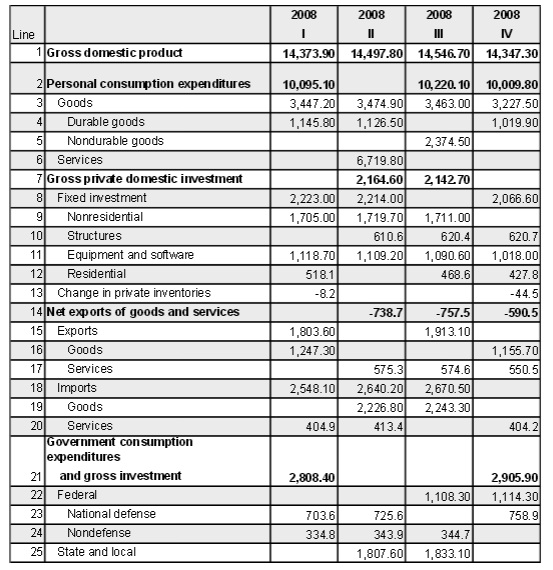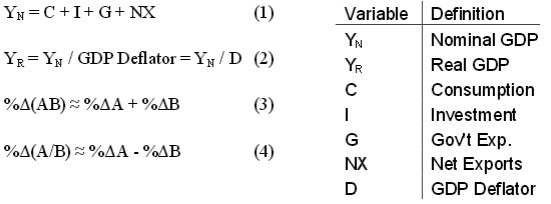Problem 1) Assume that the economy is composed of three firms: Albert’s furniture (Firm A), Brian’s l umber yard (Firm B), and Carl’s timber harvesting (Firm C). As their names suggest, Firm B purchases timber from Firm C to produce lumber, which is then used by Firm A to produce furniture. Albert directly sells his furniture to consumers. Therefore, only Firm A is producing a final good. Assume that all intermediate goods are used in the production final goods.

A) Complete the table.
B) Compute GDP using the following equivalent approaches.
i) Product
ii) Expenditure
iii) Value Added
iv) Income
C) Although they agree theoretically, briefly discuss why these four approaches to calculating GDP may disagree when applied to a real - worl d industrialized economy, such as the United States. Does this inconsistency suggest that GDP is a poor measure of economic activity? Why or why not?
Problem 2) Working as a research assistant, the US Bureau of Economic Analysis (BEA) has provided you with the following table concerning quarterly US GDP. However, the file has been corrupted , with multiple entries missing. The use of Excel is required for this problem.

A) Complete the table.
B) Are imports added to or subtracted from US GDP? Provide a short rationale.
C) Your faculty advisor notices that US net exports increased substantially in the fourth quarter of 2008. This coincided with the worst of the financial crisis, during which international trade declined sharply. Strictly looking at the data, what is your explanation for this?
D) In 2008, stock market indices lost 20 - 25% of their value. Housing prices continued to collapse, and many households view ed real estate as an important form of wealth. Given these economic events, give a brief argument as to why US imports fell by 15 %.
Problem 3) The following question deals with the GDP accounting equation and an approximation discussed by Mankiw 7e on p. 26. Equations (1) – (4) are provided, so you can take them as known alrea dy. “% Δ” stands for percentage change , and is defined in the typical way as %ΔY = (Y ’ – Y)/Y = ΔY/Y.

(1) is the GDP accounting equation ; this is how GDP is defined using the expenditure approach. Total spending (GDP) equals the sum of expenditure on each of the four components. Equation (2) is just the definition of Real G DP when Nominal GDP is provided, translating between the two with the GDP Deflator. (3) and (4) are “arithmetic tricks” that Mankiw talks about on page 26 of the text.
A) Let’s say that you know ho w fast the components of GDP are growing, and you know how much each component contributes towards the total. This information can be used to calculate the growth rate of Real GDP, provided that the inflation rate is known. In the question, you will show e xactly how to do this. Write the growth rate of Real GDP (%Δ Y R ) in terms of the growth rates of C, I, G, and NX (%ΔC, %ΔI, %ΔG, %ΔNX) and the component shares of GDP ( C / Y N , I / Y N , G / Y N , NX / Y N ). Assume that the inflation rate is 3%.
B) Let C / Y N = 0.65, I / Y N = 0.10, G / Y N = 0.20, and NX / Y N = 0.05. What is the effect on %Δ Y R of a 1% increase in %ΔC? What is the effect on %Δ Y R of a 1% increase in the inflation rate?
C) For the United States in the fourth quarter of 2008 : %ΔC = - 2.05 %, %ΔI = - 5.62% , %ΔG = - 1.21% , and %ΔNX = 22% . Compute %Δ Y R .
Problem 4 ) You are given prices for three goods from 2007 - 2009. The Cons umer Price Index (CPI) market basket is two units of rice, one unit of apples, and one unit of oranges . The CPI is constructed in the usual way , with a value of 100 meaning that the overall price level has not changed.
Price per unit 2007 2008 2009
Rice 0.5 0.4 0.3
Apples 0.25 0.4 0.6
Oranges 0.4 0.5 0.4
Problem A) With 2007 as the base year, what is the CPI in 2007? [HINT: no calculation required]
B ) With 2007 as the base year, what is the CPI in 2008? What about 2009?
C) What is the inflation rate from 2007 to 2008?
D) Using 2008 as the base year, what is the CPI in 2009 ? Between 2008 and 2009, did inflation or deflation occur ? What is the inflation/deflation rate?
E) Briefly discuss the sensitivity of the CPI measure to the specification of the market basket.
F) Households start to consume a new good which was not in the CPI market basket before. This good was commercialized due to a recent technological advance. How could you keep the CPI measure consistent across time while accounting for this new good?
Problem 5) The following data on the labor force is provided to you by the US Bureau of Labor Statistics (BLS). Again, the database has been corrupted

A) What is the total unemploym ent rate?
B) What is the total labor force participation rate?
C) What is the unemployment rate for females? What is the labor force participation rate for females?
D) What is the unemployment rate for males? What is the labor force participation rat e for males?
Problem 6) “Accounti ng frameworks affect behavior. More generally, information affects behavior. What we gather our information about , and how we describe success, affects what we strive for. If GDP is what we think is success, people will strive for growing GDP. Politicians, for example, will then describe how they increased GDP x%, creating a sense of importance to the measure. By doing that though, they focus policies on things that will increase GDP. ” – Joseph Stiglitz
Do you think that GDP is an accurate/fair measure of human welfare/standard of living? Why or why not? What about r eal GDP/capita? How could it be improved , if improvement is necessary ? Answer this in a few paragraphs.